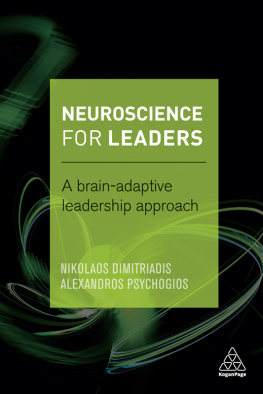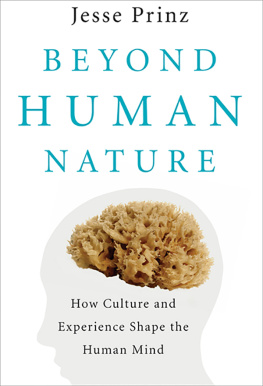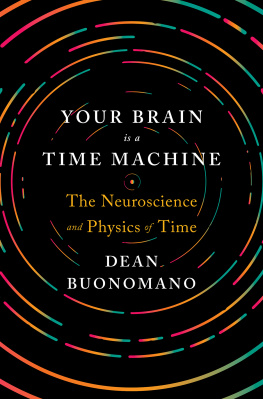BRAINWASHED
BRAINWASHED

The Seductive Appeal of
Mindless Neuroscience
Sally Satel and
Scott O. Lilienfeld
BASIC BOOKS
A Member of the Perseus Books Group
New York
Copyright 2013 by Sally Satel and Scott O. Lilienfeld
Published by Basic Books,
A Member of the Perseus Books Group
All rights reserved. No part of this book may be reproduced in any manner whatsoever without written permission except in the case of brief quotations embodied in critical articles and reviews. For information, address Basic Books, 250 West 57th Street, New York, NY 10107.
Books published by Basic Books are available at special discounts for bulk purchases in the United States by corporations, institutions, and other organizations. For more information, please contact the Special Markets Department at the Perseus Books Group, 2300 Chestnut Street, Suite 200, Philadelphia, PA 19103, or call (800) 810-4145, ext. 5000, or e-mail .
A CIP catalog record for this book is available from the Library of Congress.
ISBN: 978-0-465-03786-5 (e-book)
10 9 8 7 6 5 4 3 2 1
This book is dedicated to the memory of
James Q. Wilsonscholar, gentleman, naturalist.
CONTENTS
Introduction:
Losing Our Minds in the Age of Brain Science
Y OUVE SEEN THE HEADLINES: This is your brain on love. Or God. Or envy. Or happiness. And theyre reliably accompanied by articles boasting pictures of color-drenched brainsscans capturing Buddhist monks meditating, addicts craving cocaine, and college sophomores choosing Coke over Pepsi. The mediaand even some neuroscientists, it seemslove to invoke the neural foundations of human behavior to explain everything from the Bernie Madoff financial fiasco to slavish devotion to our iPhones, the sexual indiscretions of politicians, conservatives dismissal of global warming, and even an obsession with self-tanning.
Brains are big on campus, too. Take a map of any major university, and you can trace the march of neuroscience from research labs and medical centers into schools of law and business and departments of economics and philosophy. In recent years, neuroscience has merged with a host of other disciplines, spawning such new areas of study as neurolaw, neuroeconomics, neurophilosophy, neuromarketing, and neurofinance. Add to this the birth of neuroaesthetics, neurohistory, neuroliterature, neuromusicology, neuropolitics, and neurotheology. The brain has even wandered into such unlikely
Clearly, brains are hot. Once the largely exclusive province of neuroscientists and neurologists, the brain has now entered the popular mainstream. As a newly minted cultural artifact, the brain is portrayed in paintings, sculptures, and tapestries and put on display in museums and galleries. One science pundit noted, If Warhol were around today, hed have a series of silkscreens dedicated to the cortex; the amygdala would hang alongside Marilyn Monroe.
The prospect of solving the deepest riddle humanity has ever contemplateditselfby studying the brain has captivated scholars and scientists for centuries. But never before has the brain so vigorously engaged the public imagination. The prime impetus behind this enthusiasm is a form of brain imaging called functional magnetic resonance imaging (fMRI), an instrument that came of age a mere two decades ago, which measures brain activity and converts it into the now-iconic vibrant images one sees in the science pages of the daily newspaper.
As a tool for exploring the biology of the mind, neuroimaging has given brain science a strong cultural presence. As one scientist remarked, brain images are now replacing Bohrs planetary atom as the symbol of science. With its implied promise of decoding the brain, it is easy to see why brain imaging would beguile almost anyone interested in pulling back the curtain on the mental lives of others: politicians hoping to manipulate voter attitudes, marketers tapping the brain to learn what consumers really want to buy, agents of the law seeking an infallible lie detector, addiction researchers trying to gauge the pull of temptations, psychologists and psychiatrists seeking the causes of mental illness, and defense attorneys fighting to prove that their clients lack malign intent or even free will.
The problem is that brain imaging cannot do any of these thingsat least not yet.
AUTHOR Tom Wolfe was characteristically prescient when he wrote of fMRI in 1996, just a few years after its introduction, Anyone who cares to get up early and catch a truly blinding twenty-first-century dawn will want to keep an eye on it. Now we cant look away.
Why the fixation? First, of course, there is the very subject of the scans: the brain itself. More complex than any structure in the known cosmos, the brain is a masterwork of nature endowed with cognitive powers that far outstrip the capacity of any silicon machine built to emulate it. Containing roughly 80 billion brain cells, or neurons, each of which communicates with thousands of other neurons, the three-pound universe cradled between our ears has more connections than there are stars in the Milky Way. How this enormous neural edifice gives rise to subjective feelings is one of the greatest mysteries of science and philosophy.
Now combine this mystique with the simple fact that picturesin this case, brain scansare powerful. Of all our senses, vision is the most developed. There are good evolutionary reasons for this arrangement: The major threats to our ancestors were apprehended visually; so were their sources of food. Plausibly, the survival advantage of vision gave rise to our reflexive bias for believing that the world is as we perceive it to be, an error that psychologists and philosophers call naive realism. This misplaced faith in the trustworthiness of our perceptions is the wellspring of two of historys most famously misguided theories: that the world is flat and that the sun revolves around the earth. For thousands of years, people trusted their raw impressions of the heavens. Yet, as Galileo understood all too well, our eyes can deceive us. He wrote in his Dialogues of 1632 that the Copernican model of the heliocentric universe commits a rape upon the sensesit violates everything our eyes tell us.
Neuroimaging is a young science, barely out of its infancy, really. In such a fledgling enterprise, the half-life of facts can be especially brief. To regard research findings as settled wisdom is folly, especially when they emanate from a technology whose implications are still poorly understood. As any good scientist knows, there will always be questions to hone, theories to refine, and techniques to perfect. Nonetheless, scientific humility can readily give way to exuberance. When it does, the media often seem to have a ringside seat at the spectacle.
Several years ago, as the 2008 presidential election season was gearing up, a team of neuroscientists from UCLA sought to solve the riddle of the undecided, or swing, voter. They scanned the brains of swing voters as they reacted to photos and video footage of the candidates. The researchers translated the resultant brain activity into the voters unspoken attitudes and, together with three political consultants from a Washington, D.C.based firm called FKF Applied Research, presented their findings in the New York Times in an op-ed titled This Is Your Brain on Politics. regions that lit up when the subjects were exposed to images of Hillary Clinton, Mitt Romney, John Edwards, and other candidates. Revealed in these activity patterns, the authors claimed, were some voter impressions on which this election may well turn. Among those impressions was that two candidates had utterly failed to engage with swing voters. Who were these unpopular politicians? John McCain and Barack Obama, the two eventual nominees for president.











